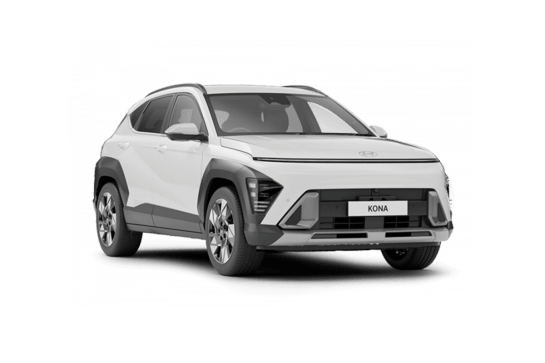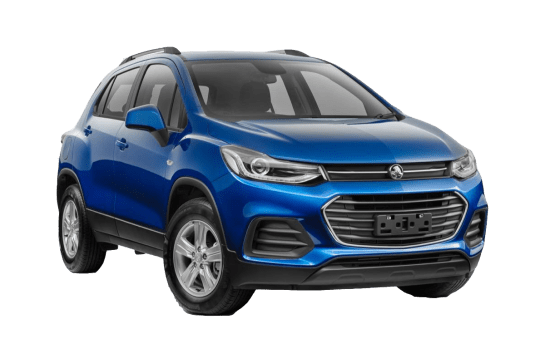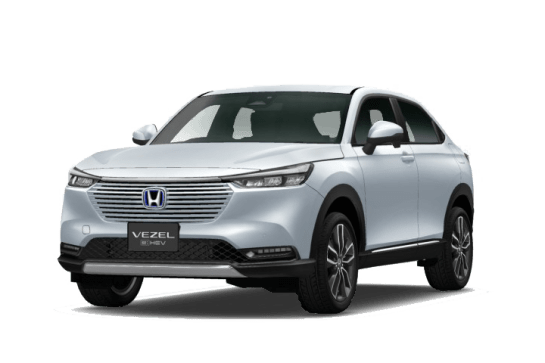
Hyundai Kona VS Mazda CX-3
Hyundai Kona
Likes
- Instantly familiar drive experience
- Street-style design impresses
- Cabin tech aplenty
Dislikes
- Lack of true fast-charging
- Binging, bonging safety systems (that can be switched off)
- 370km range rules out longer-distance road trips
Mazda CX-3
Likes
- Value
- Space efficiency
- Dynamic performance
Dislikes
- Frustrating media interface
- Raspy engine noise
- Dated interior
Summary
Hyundai Kona
Okay, so I know this car. Well, not this car exactly. But I know the Hyundai Kona.
The last-generation Kona Electric was one of my favourite EVs, I’ve driven the Kona N on racetracks, I just reviewed the Kona Hybrid, and I’m currently – as in right now – driving the Kona petrol on a long-term loan.
In short, when it comes to Hyundai’s not-so-small small SUV, I’m generally all over it.
Read more about
Except for this one, the all-new Kona Electric, which is supposed to act as a stepping stone between Hyundai’s regular electric models and its more premium Ioniq family.
But the big question I have, of course, is whether this electric one is actually the version you want? And has full electrification helped or hindered the Kona formula in this generation, especially in the face of stiff competition from Tesla, BYD, and even from Hyundai itself, in the shape of its Ioniq family?
So, let’s go find out.
| Safety rating | |
|---|---|
| Engine Type | — |
| Fuel Type | Electric |
| Fuel Efficiency | —L/100km |
| Seating | 5 seats |
Mazda CX-3
Hard to believe Mazda’s diminutive CX-3 has been with us for close to a decade (it arrived in early 2015). But with successive upgrades, including a major model refresh in 2019, it remains a popular choice with ‘light’ SUV buyers, dominating the segment so far in 2023.
So, how does this evergreen campaigner manage to keep quality competitors like the Kia Stonic, Toyota Yaris Cross and VW T-Cross firmly in its rearview mirror?
Read more about
We spent a week with the recently updated (yes, again) mid-spec G20 Evolve to see how it shapes up in the urban environment of 2023.
| Safety rating | |
|---|---|
| Engine Type | 2.0L |
| Fuel Type | — |
| Fuel Efficiency | 6.3L/100km |
| Seating | 5 seats |
Verdict
Hyundai Kona7.4/10
It hardly feels cutting-edge in the world of EVs, but it is refreshingly familiar to look at, sit in and drive, and it shrinks the jump from an ICE vehicle to your first EV into something that feels entirely manageable. This is easy, breezy, fuss-free electric motoring.
Mazda CX-37.4/10
It’s easy to see why the Mazda CX-3 remains such a favourite with small SUV buyers. The Evolve grade tested is dynamically capable, space efficient and well equipped for the money. That said, although I don’t like being ageist, as it starts to creep up on a decade on sale, the market leader is giving ground to the competition in key areas including design, fuel efficiency and refinement. It’s time for a new-generation model, but in the age of electrification, will there be one? In the meantime, this evergreen favourite remains a solid urban SUV option.
Design
Hyundai Kona
Hyundai has made a big deal about designing the new Kona as an EV first, so it doesn't matter if you buy the petrol, the hybrid or the full electric, they all share styling cues.
But for mine, the Electric is the pick of the bunch, looking modern – futuristic even – without pushing it too far.
Some EVs look like they will age like a glass of milk, but the Kona isn't one of them. I suspect it will still look plenty sharp five years from now.
Even the sharp body creases along its flanks don't look overly in-your-face, and the design of the alloy wheels, the lightly flared wheel arches and the swept-back roofline all give the Kona Electric a relatively sleek and sporty profile.
But the Kona Electric looks best from front-on, where the slim light bars, pixelated grille and rounded snout look great.
Inside, the Kona Electric is a little more predictable, coming across as any other internal-combustion SUV, rather than delivering some future-facing cabin of surprises – albeit with the Drive selector shifted from its usual place between driver and passenger to a stalk to the right of the steering wheel.
Mazda CX-3
You’re not going to mistake the current CX-3 for anything other than a Mazda, which speaks to the consistency of the brand’s design approach.
Tightly wrapped and neatly detailed the CX-3's exterior has aged well, and thanks to cosmetic tweaks over time it’s still looking clean and contemporary.
The step up from 16-inch alloys on the lower Sport and Pure grades to 18-inch rims on this Evolve also lifts the look to a more mature, premium level.
The interior is a simple, fuss-free environment, but in a small-SUV world moving rapidly towards slick integrated screens for multimedia and instrumentation, the CX-3 is showing its age.
The 8.0-inch media display stands proud in the centre of the dash, almost like an afterthought, and the instrument cluster, while okay from an ergonomic point of view, is dated by an analogue tachometer in the centre and LCD-style read-outs either side.
And although it’s always a subjective call, I’m guessing the Evolve’s white and tan interior trim combination won’t be to everyone’s liking, from an aesthetic or practicality point-of-view.
That said, the interior surfaces across the dash, doors and centre console flow into one another nicely, and brushed metal look highlights around key controls and vents enhance the quality feel.
Speaking of which, physical dials and knobs for adjustment of the ventilation system and audio volume is welcome. Maybe old-school is the best school?
However… the multimedia screen can only be accessed by a rotary dial in the front centre console once the car is mobile (it works as a touchscreen when you’re stationary).
Keenly aware there are various opinions on this set-up when it comes to safety. Touchscreens, by definition, take your eyes off the road ahead, so on one hand it makes sense to transfer control to the rotary dial.
But when you’re using a sequential app like Spotify, it can take a hell of a lot of twirls of that controller to get to where you want to go.
Soon you’re grinding your teeth in frustration which upsets concentration and your eyes are well-and-truly off the road, anyway.
For what it’s worth, I’d prefer the relative ease of a quick press on the screen rather than having to go ‘around the horn’ to hit your favourite track or podcast.
Practicality
Hyundai Kona
It's bigger than its ever been, this new-generation Kona, measuring just over 4.3m long, 1.8m wide and close to 1.6m tall – 30mm taller and 145mm longer than the model it has replaced.
And yes, that's most notable in the back seat, where my 175cm frame fits with ease. Hyundai tells me there's now 77mm more legroom, 17mm more shoulder room and 15mm more headroom, but what you really need to know is there is space aplenty for second-row riders.
The boot is bigger, too, now 407L to 1241L, and there are ample storage cubbies, bottle holders and console storage, including pop-out cupholders between driver and passenger.
Mazda CX-3
At just under 4.3m long, less than 1.8m wide and a little over 1.5m tall the CX-3’s footprint is squarely city-sized, and no surprise it shares the Mazda2’s 2570mm wheelbase because it’s underpinned by the same platform as the small hatch.
But there’s more than enough breathing room up front and storage options are creative.
Rather than the ubiquitous single storage box between the front seats the CX-3 offers up an adjustable multi-compartment arrangement, with cupholders and bottle retainers ready to flick into position in multiple locations.
It’s still covered with a padded lid which doubles as an armrest, and there’s also a generous glove box and bins in the doors with space for large bottles, even an overhead drop-down glasses holder.
Move to the back and there’s a surprising amount of head, leg and shoulder room for an SUV of this size. Sure, it’s no limo, but sitting behind the driver’s seat set to my 183cm position, I was pretty comfortable.
Best for two full-size adults in the rear, although a third can squeeze in for short, relatively uncomfortable journeys. Three up to mid-teenage kids will be fine.
Rear storage includes bottle shaped cavities in the doors, a map pocket on the back of the front passenger seat only (a weird Mazda habit) and dual pop-out cupholders in the fold-down centre armrest.
No adjustable ventilation outlets in the rear, but in a car this compact, their absence isn’t as big an issue as it might be elsewhere.
For power and connectivity, there are two USB-A sockets in the front (one media, one power-only) as well an SD card slot, an ‘aux in’ jack and a 12V outlet. No power options in the rear, which won’t play well with the kids.
With the back seat upright, boot capacity is an okay 264 litres. Enough to accommodate either the largest 124L or the smaller 95L and 36L suitcases from out three-piece set. But not all of them together.
With a bit of not so gentle persuasion, the large CarsGuide pram just squeaked in, but lower the 60/40 split-folding rear backrest and available space expands to 1174L.
Tie-down anchors to help secure loose loads is a plus and a speed-limited space-saver spare sits under the boot floor.
And if you need to hook up a small boat or other lightweight trailer, the CX-3 Evolve is rated to 1200kg (braked) and 640kg (unbraked).
Price and features
Hyundai Kona
Fun fact. We drove the Hyundai Kona Electric some time ago, but refrained from writing about it because the Korean brand couldn't yet tell us what it would cost. And in the increasingly competitive world of electric vehicles, the price is a big factor.
And yes, that's unusual. Car companies usually have every possible duck in a row before launching a vehicle. But with the Kona Electric, Hyundai was fighting over the price, trying to get it as low as it possibly could.
So, where did it end up? Cheaper than the last one.
The Kona Electric can be had as a base model or Premium, with the entry-level then able to be had in Standard Range or Extended Range guises (the Premium is Extended Range only).
So, the base Kona Electric Standard Range is now $54,000, before on-road costs, which is $500 cheaper than the model it replaces.
The Extended Range version of the same car is now $58,000, some $2500 cheaper than before. The only bad news is for the Kona Electric Premium, which lists at $68,000, or $4000 more than its predecessor.
For the record, that makes the Kona slightly more expensive than the BYD Atto 3 ($48,011 to $51,011), and cheaper than a Tesla Model Y ($65,400 to $78,400, not including the Performance).
What separates the base-model cars is the battery (48.6kWh or 64.8kWh), so both share 17-inch alloy wheels, LED headlights, dual 12.3-inch screens for the digital instruments and multimedia touchscreen, Apple CarPlay and Android Auto connectivity, a wireless phone charger, dual-zone climate, keyless entry and push-start ignition, as well as a full active safety suite.
The Premium grade then gets 19-inch alloy wheels, synthetic leather interior trim, heated and ventilated seats, a heated steering wheel, a head-up display, a Bose premium audio system, remote smart parking assist, a sunroof and a powered tailgate.
Mazda CX-3
At $31,050, before on-road costs, the G20 Evolve sits in the middle of a five-model CX-3 line-up, which starts with the $G20 Sport ($26,800) and finishes with the G20 Akari ($38,620).
It competes with nine other light SUVs, and to the end of November 2023 has more than doubled the sales volume of its nearest competitors.
Supply constraints may have played a part, but the CX-3 Evolve is way ahead of its direct rivals, the Hyundai Venue Elite ($28,750), Kia Stonic GT-Line ($30,790), Toyota Yaris Cross GXL Hybrid ($33,000) and VW T-Cross 85TFSI Life ($30,990).
Aside from the safety and performance tech we’ll get to shortly, standard equipment includes auto LED headlights and DRLs, rain-sensing wipers, climate control, cruise control, a leather-trimmed steering wheel, an 8.0-inch multimedia screen, six-speaker audio with digital radio plus Android Auto (wired) and Apple CarPlay (wireless) connectivity, sat-nav, keyless entry and start, front and rear parking sensors, a reversing camera and 18-inch alloy wheels.
Standard seat trim is white synthetic leather with tan synthetic suede inserts (also applied to the doors and dash).
That’s a pretty handy roll-call of included features in this part of the market, which meets or exceeds similarly priced competitors.
Under the bonnet
Hyundai Kona
Both Kona variants are single-motor propositions, but you do get more grunt when you opt for the bigger battery.
Base-model cars get a single, front-mounted electric motor, producing 99kW and 255Nm, while the Premium and Extended Range models deliver 150kW and 255Nm.
Neither, though, are particularly fast, reporting a 9.9sec or 8.1sec sprint to 100km/h, respectively.
Mazda CX-3
The CX-3 is powered by a 2.0-litre, four-cylinder petrol engine sending drive to the front wheels via a six-speed auto transmission.
The all-alloy unit features direct-injection and variable valve timing to produce 110kW at 6000rpm and 195Nm at 2800rpm.
Efficiency
Hyundai Kona
We know already that the Kona can be had with two battery sizes, and the first (48.6kWh) will deliver a theoretical driving range of 370km on the WLTP cycle.
The bigger battery, now 64.8kWh, ups that number to 505km, but with a catch.
See, the Premium arrives with 19-inch alloy wheels, which look great, but also reduce efficiency, dropping your range to 444km. To get the full 505km, you need to stick with the 17-inch alloys.
It's also not the fastest-charging EV on the planet. The on-board AC charger is now set up for 10.4kW (though most home chargers are more like 7.0kW), but DC charging is limited to less than 100kW, meaning a 10 to 80 percent charge takes 45 minutes – or over an hour if you're using a 50kW fast charging station.
The Kona Electric also introduces an interior V2L plug, the same kind you might find in your kitchen, meaning you can plug in thirstier electronic deceives like laptops when on the move.
Mazda CX-3
Mazda’s official fuel economy number for the combined (ADR 81/02 - urban, extra-urban) cycle is 6.3L/100km, the 2.0-litre four-cylinder emitting 143g/km of CO2 in the process.
That’s an impressively small emissions figure for a 2.0L petrol engine, more in line with smaller-capacity engines.
Stop-start is standard and over a week of city, suburban, and some freeway running, we averaged 7.4L/100km (at the pump), while the car’s on-board computer indicated 7.1L/100km for the same period.
Minimum fuel requirement is 91 RON ‘standard’ unleaded (or E10) and you’ll need 48 litres of it to fill the tank.
Using the official number, that translates to a driving range of around 760km, which drops to roughly 650km using our real-world figure.
Driving
Hyundai Kona
What's it like to drive? Bloody easy, to be honest. What I loved about the old Kona Electric still rings true here, and that is that it this feels like a very easy step to make if you're moving into your first electric vehicle.
It looks familiar, it feels familiar, and it's immediately familiar to drive.
You know how some EVs feel mega-futuristic, pushing you back in your chair every time you poke the accelerator, all silent and slightly discombobulating aggression?
Well, this isn't one of those. It's smooth, sedate even, with fairly leisurely acceleration, smooth steering and a ride that's comfy enough, too.
But as I was cruising back from Canberra to Sydney (which required a charging stop, btw), I was pondering what it is people want from a small SUV. Mind-bending performance? Or practicality and comfort?
I suspect it's the latter, and the Kona Electric delivers on that front.
That said, the time it takes to charge is punishing. To have to stop for 30 minutes on the drive between Canberra and Sydney (granted, it was only 80 percent charged when I got in it) is tough, but it's made tougher still when the time stationary is half an hour plus.
Mazda CX-3
The CX-3’s compact size makes it easy to steer through tight city and suburban streets.
It weighs in at just under 1.3 tonnes, which is marginally lighter than most of its key competitors, and acceleration is sprightly with the 0-100km/h covered in less than nine seconds.
Close to 200Nm of pulling power is plenty for a car in this class and unusually for a non-turbo engine, peak torque arrives at a relatively low 2800rpm, so there’s ample mid-range urge.
The downside is the 2.0-litre, four-cylinder engine makes its presence felt inside the cabin, with mechanical noise noticeable even at around-town speeds. Not a conversation stopper by any means, but it’s there.
No complaints with the six-speed auto transmission. It’s smooth and the ratios keep the car in its performance sweet spot nicely. It also shifts into sequential ‘Manual’ mode if your prefer or need to call the shots.
Electric ‘drive-by-wire’ throttle response is smooth, but flick the console-mounted rocker switch to ‘Sport’ and things become more urgent, with the transmission shifting down earlier and holding on to ratios longer.
The steering is evenly weighted for easy parking and road feel is good. Speaking of parking, a 10.6m turning circle is large-ish for such a diminutive SUV, but surprisingly, not out of line for the category.
Suspension is by struts at the front and torsion beam at the rear, and despite the CX-3’s relatively short wheelbase and the Evolve’s bigger 18-inch wheels, ride comfort over typically pock-marked urban roads is surprisingly good. The Toyo Proxes R52A (215/50) tyres are also quiet and reassuringly grippy.
Braking is by generous ventilated discs at the front and solid rotors at the rear, and they’re more than up to the task of calmly washing off speed in this city-sized SUV.
The front seats proved comfy and supportive on test, although you’ll have to step up to the next Touring grade to score electric adjustment for the drive or lumbar control of any description.
Safety
Hyundai Kona
It's officially a four-star ANCAP vehicle, this Kona, owing mostly to the performance of some of its active safety kit, like AEB, which ANCAP described as "adequate".
How much that bothers you is an individual thing (I can tell you it bothers me exactly not at all), and the Kona is fitted with a whole bunch of safety kit, including seven airbags, 'Forward Collision-Avoidance Assist 2.0' (AEB) with human and bike detection, lane change and junction assist, 'Blind-Spot Collision-Avoidance Assist' and 'Blind-Spot View Monitor', intelligent cruise control and auto lights.
Mazda CX-3
The CX-3 had a maximum five-star ANCAP score from 2015 to 2022, but the independent safety body’s assessments have a seven-year shelf life and the compact SUV is currently ‘unrated’.
That said, active (crash-avoidance) tech is up to the mark with AEB (forward and revers with front pedestrian detection), blind-spot monitoring, lane departure warning, front and rear parking sensors, rear cross-traffic alert, a reversing camera and smart city brake support (front and rear) included.
If a crash is unavoidable, there are six airbags onboard (dual front, dual front side and side curtain), the CX-3 showing its age somewhat with the absence of the now increasingly common front centre bag designed to minimise head injuries in a side impact.
There are three top tethers for baby capsules/child seats across the rear row with ISOFIX anchors on the two outer positions.
Ownership
Hyundai Kona
The Kona Electric is covered by Hyundai's five-year, unlimited-kilometre warranty, while the battery is covered for eight years or 160,000km.
Servicing is a strong point, with the intervals pegged at 24 months or 30,000km, and capped at $520 per visit for the first three services, or up to six years.
Mazda CX-3
Mazda covers the CX-3 with a five-year/unlimited-kilometre warranty, which is the current market standard. Roadside assist is included for the duration.
Recommended service interval is 12 months/15,000km, and the average annual cost for each workshop visit, for the first seven years, is $438.
An average under $450 is alright, but Toyota’s capped price figure of $195 per workshop visit for the first five years of C-HR ownership puts it in perspective. Mind you, Toyota’s charges step up considerably after that fifth year.














